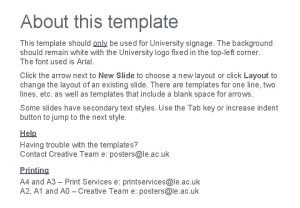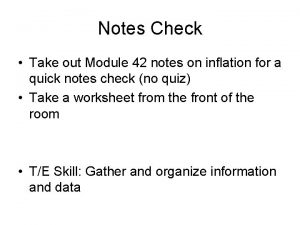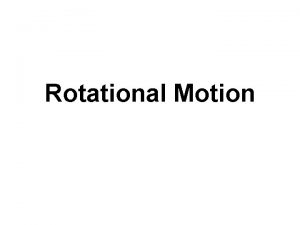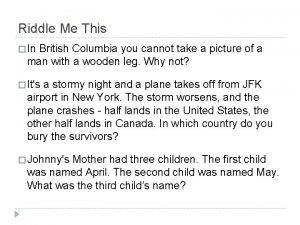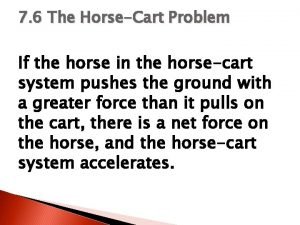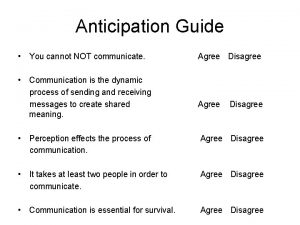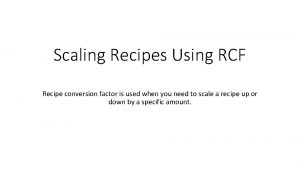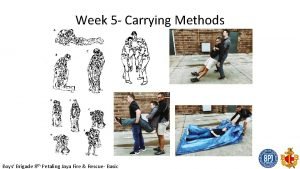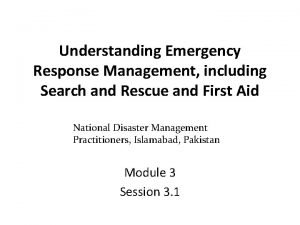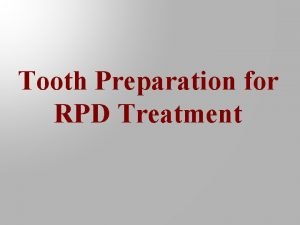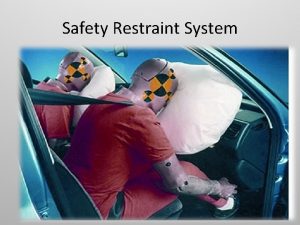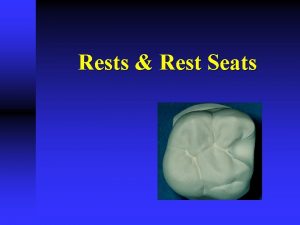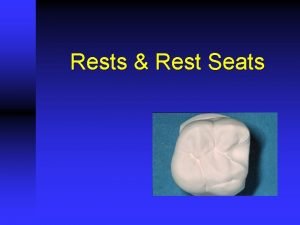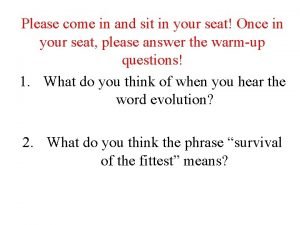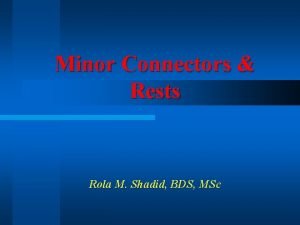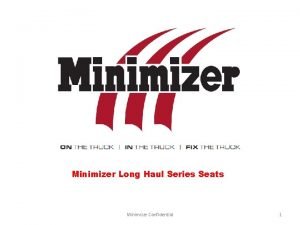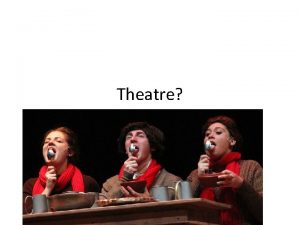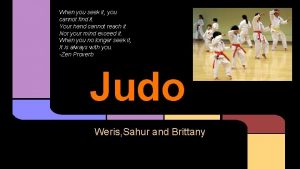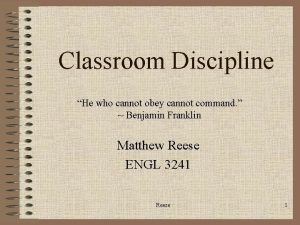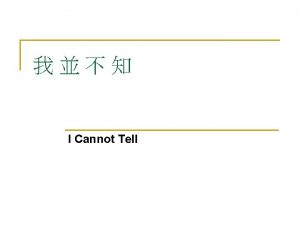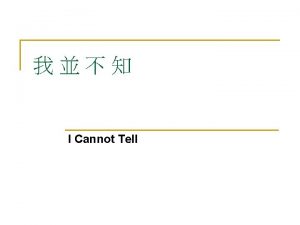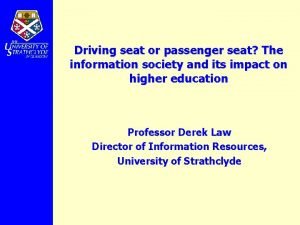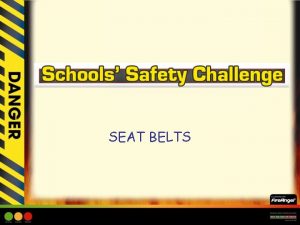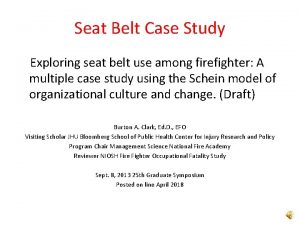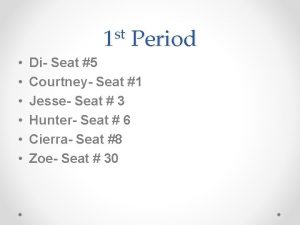If you cannot find a seat lecture theatre





































- Slides: 37

If you cannot find a seat, lecture theatre 2 is being used as an overflow Thank you

Scenario-based Skill Teaching ® ATLS th 10 Edition

7 skills stations • Airway (x 2) • Breathing • Circulation • Disability • Secondary Survey • Adjuncts • Trauma Team

Skills stations • Airway • Breathing • Circulation • Disability • Secondary Survey • Adjuncts • Trauma Team Appear in the course in a logical order – for all candidates A B/C D…………

Skills stations • Airway • Breathing • Circulation • Disability • Secondary Survey • Adjuncts • Trauma Team Multiple stations need to run in parallel eg. 4 airway stations for 16 candidates

Skills stations • Airway • Breathing • Circulation • Disability • Secondary Survey • Adjuncts • Trauma Team Skills taught or demonstrated in the context of unfolding scenario(s) Stimulus questions

Skills stations • Airway • Breathing • Circulation • Disability • Secondary Survey • Adjuncts • Trauma Team Need to know (cognitive) skills (demo/discuss) Need to do (psychomotor) skills (DO)

1. airway Basic Advanced Paediatric/Surgical Airway assessment Laryngeal mask (or tube) insertion – DO Basic airway (paed v adult) demo/discuss Jaw thrust demo/discuss LEMON demo/discuss Nasal airway, suction, oral Oral endotracheal Surgical cricothyroidotomy airway - DO intubation – demo/discuss - DO Bag Valve Mask (1 and 2 person) - DO Needle cricothyroidotomy Do

2. breathing (1) • Breathing assessment – DO or demo/discuss • Needle decompression – DO • Chest drain (thoracostomy tube) insertion – DO • Elderly chest injury – demo/discuss • Sucking chest wound – demo/discuss • Severe chest injury scenario – demo/discuss

2. breathing (2) • Introduction and skill level ascertainment • scenario 1 (m-cycle) • Assessment to detect life-threatening injuries – DO or interactive discussion • case 1 progression • Needle decompression of tension pneumothorax – DO • case 1 what next? • Insertion of intercostal drain – DO • close scenario

2. breathing (3) • scenario 2 (elderly fall) • Assessment to detect life-threatening injuries – re-cap • case 2 progression • Management of haemo-pneumothorax in elderly – interactive discussion

2. breathing (4) • scenario 3 (propellor) • Assessment to detect life-threatening injuries – re-cap • case 3 progression • Management of open (sucking) pneumothorax - demo/discuss occlusive dressing • case 3 what next? • Insertion of intercostal drain – re-cap • Surgical referral - discuss

2. breathing (5) • scenario 4 (car) • Assessment to detect life-threatening injuries – re-cap • case 4 progression • Management of life-threatening injuries – discussion • Aortic injury • case 4 what next? • Interventions and investigations • Definitive (surgical) care • ? ? ? Summary and closure

3. circulation • Assessment of Shock – demo/discuss • Wound packing – demo/discuss • Application of tourniquet – demo/discuss • Insertion of intra-osseous needle – DO • Application of pelvic binder – demo/discuss • Femoral access – DO or demo/discuss • Non-haemorrhagic shock – demo/discuss

4. disability • Assessment of neurological status – demo/discuss • Evaluation of C spine injury – demo/discuss • Reassessment of changing neurological status – demo/discuss • Referral process – demo/discuss • Detailed neurological exam – demo/discuss • Log roll – demo/discuss (rotate all roles) • Elderly patient assessment of neurological status – demo/discuss • Central cord syndrome assessment – demo/discuss

5. secondary survey • Application of hard collar - DO • Perform secondary survey patient 1 – demo/discuss • Perform secondary survey patient 2 – demo/discuss • Open fracture management – demo/discuss • Perform secondary survey patient 3 – demo/discuss • Perform secondary survey patient 4 – demo/discuss

6. adjuncts • e. FAST probe positioning/scanning – demo/discuss • Chest X ray interpretation – DO • Pelvic X ray interpretation – DO • Spine X ray interpretation - DO


10 th edition Scenario Based Teaching • Scenarios unfold throughout the skills stations • At relevant point in scenario, students identify a skill to be performed • Skill is taught using 4 stage model • Scenario continues • Skills are identified as: • Demonstration only (need to know of) • Performance (need to do)

Miller’s Pyramid Metacognitive knowledge Procedural knowledge Conceptual knowledge Factual knowledge Miller, GE, 1990; 65

Krathwohl’s modified Bloom’s Cognitive Taxonomy Metacognitive Knowledge Real Life Practice Procedural Knowledge Initial Assessment Conceptual Knowledge Factual Knowledge Krathwohl, 2002, p 216 Skills scenarios Manual & m learning





• Skills station 1 video

Principles of teaching a psychomotor skill (ATLS) 1. 2. 3. 4. 5. 6. 7. Conceptualisation – scenario drawing on knowledge from manual Visualisation – seeing the skill Verbalisation – hearing the skill, then describing the skill Practice – performing the skill Reinforcement & correction – whilst performing the skill Skill mastery Skill autonomy

ATLS model of skill acquisition 1. Conceptualisation – facilitator does, all watch 2. Visualisation – facilitator does and describes, (all watch and listen) 3. Verbal – facilitator does and learner A describes 4. Practical – learner A describes and then does (instructor auto corrects)

• Skills station 2 video

• Skills station 3 video

• Skills station 4 video

Why scenarios? • Greater participant engagement - asking and answering questions • Improved integration of knowledge and skill • Improved transfer of knowledge and understanding through application • More opportunity to identify gaps – immediate feedback • Alpha testing showed more engagement from learners • Mimics learning in clinical practice


Facilitators will: • • • Present scenarios to contextualise ATLS principles Ask range of questions to elicit application of knowledge Build on questioning to help students identify interventions Use four stage approach to facilitate skill acquisition Scaffold different levels of learning Immediate situational feedback

Learners will: • Demonstrate understanding of context by responding to scenario questions • Apply knowledge from manual by suggesting interventions • Develop relevant skills by 4 stage approach • Be engaged throughout • Identify knowledge gaps with immediate feedback • Relate scenario to real life practice

Pitfalls or risks • Not using scenario, just teaching skills • Lecturing, using no questions • Discussion, no skills • Lack familiarity with scenario and skill • Side tracking – requiring facilitator focus • Multiple conversations – requiring group dynamics management • Errors made in 4 th stage – requiring immediate facilitator correction • Time!

 You can't improve what you don't measure quote
You can't improve what you don't measure quote You can t improve what you don t measure
You can t improve what you don t measure If you can't measure it you can't control it
If you can't measure it you can't control it Battlefield macbeth
Battlefield macbeth 01:640:244 lecture notes - lecture 15: plat, idah, farad
01:640:244 lecture notes - lecture 15: plat, idah, farad Peter williams lecture theatre
Peter williams lecture theatre Lecture theatre
Lecture theatre Arvod cannot find work as a mall santa in january.
Arvod cannot find work as a mall santa in january. Mfc
Mfc You cannot scale crappy code
You cannot scale crappy code What is the difference between torque and force
What is the difference between torque and force In british columbia riddle
In british columbia riddle I cannot exist without you john keats
I cannot exist without you john keats Horse cart problem class 11
Horse cart problem class 11 The universe is sacred you cannot improve it
The universe is sacred you cannot improve it You cannot not communicate
You cannot not communicate Rcf cooking
Rcf cooking You say you love the rain but you open your umbrella
You say you love the rain but you open your umbrella Eat meals that are nutritious agree or disagree
Eat meals that are nutritious agree or disagree If you think you can you can poem
If you think you can you can poem Tell me what you eat and i shall tell you what you are
Tell me what you eat and i shall tell you what you are Whereever you go i will follow
Whereever you go i will follow One plus one equals zero
One plus one equals zero Firemans drag
Firemans drag Drabc
Drabc Supporting cusp
Supporting cusp Mercy seat bible
Mercy seat bible Federal seat belt law
Federal seat belt law Canine rest seat
Canine rest seat Rest seat prep
Rest seat prep Front seat valve
Front seat valve Pop art landscape
Pop art landscape Please come in and sit
Please come in and sit Types of rest in rpd
Types of rest in rpd Minimizer truck seats
Minimizer truck seats Hey hey people
Hey hey people Good morning please have a seat
Good morning please have a seat Good morning please have a seat
Good morning please have a seat





